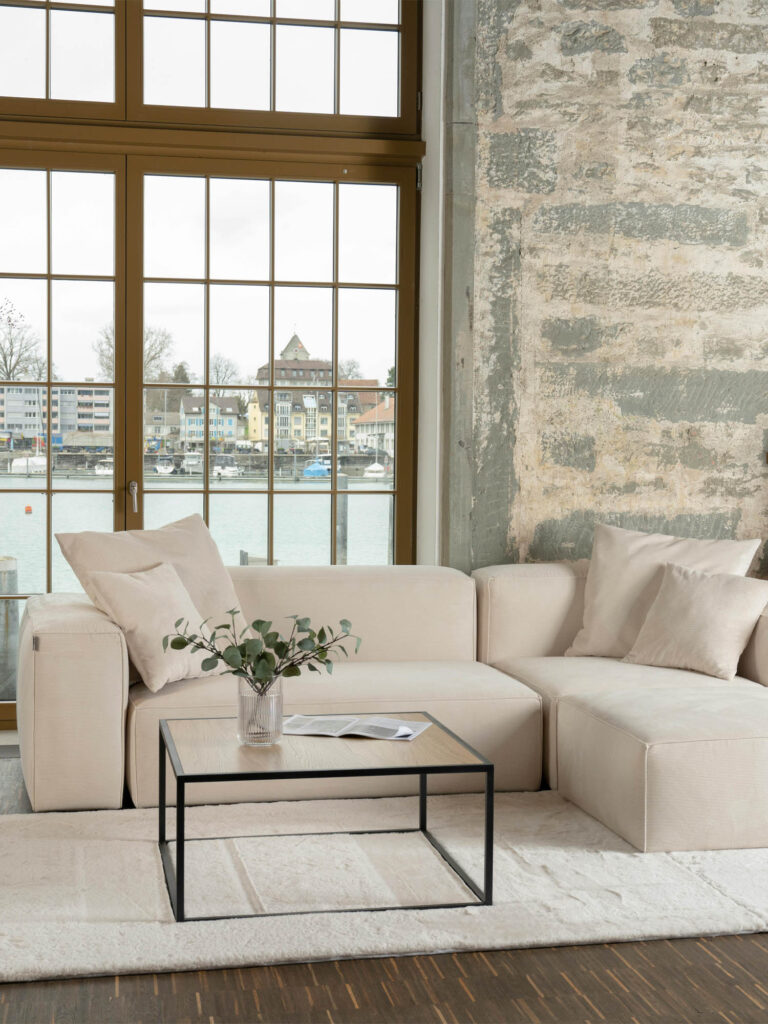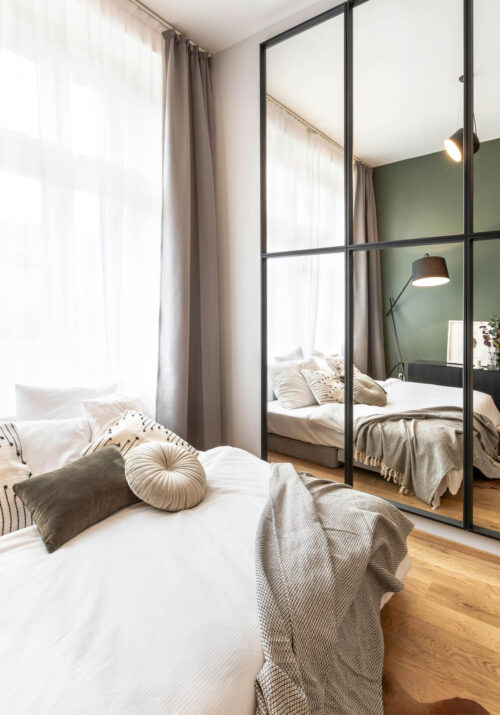When it comes to creating a stylish and elegant living space, it’s essential to steer clear of common interior design mistakes that can detract from the overall aesthetic appeal.
In this blog post, we’ll explore some of the top faux pas to avoid, ensuring your home exudes timeless style and sophistication. By understanding these pitfalls, you can make informed decisions that elevate your interior design efforts and create a space that stands the test of time, reflecting your unique personality and preferences.

Overcrowding: Less is More
One of the most prevalent mistakes in interior design is overcrowding. While it might be tempting to fill every inch of space with furniture and decor, this can lead to a cluttered and chaotic environment. Instead, embrace the principle of “less is more.” Opt for quality over quantity, choosing a few statement pieces that complement each other and allow the room to breathe.
Consider the flow of movement within the space, ensuring that pathways are clear and furniture placement facilitates easy navigation. By creating a sense of openness and simplicity, you can foster a more relaxed and inviting atmosphere that promotes comfort and relaxation.
Ignoring Scale and Proportion
Maintaining proper scale and proportion is crucial for achieving a harmonious balance within a room. Avoid the mistake of using furniture or decor that overwhelms or underwhelms the space. Consider the size of the room and the scale of existing elements when selecting pieces to ensure they fit proportionately and create visual cohesion.
Pay attention to the relationship between larger and smaller items, ensuring that each contributes to the overall composition without overpowering the other. By striking the right balance between scale and proportion, you can create a sense of harmony and visual interest that enhances the overall appeal of the room.
Neglecting Lighting Design
Lighting plays a pivotal role in interior design, yet it’s often overlooked or poorly executed. Avoid the faux pas of relying solely on overhead lighting or inadequate fixtures. Instead, incorporate a variety of lighting sources, including ambient, task, and accent lighting, to illuminate different areas and create ambiance.
Additionally, embrace natural light whenever possible to enhance the overall aesthetic. Consider the function of each space and tailor your lighting design to meet specific needs, whether it’s creating a cozy atmosphere in the living room or providing ample task lighting in the kitchen. By layering different types of lighting, you can add depth and dimension to the room while enhancing its functionality and visual appeal.
Avoid common interior design faux pas and ensure timeless style and elegance in your home – keep reading to learn the top mistakes to steer clear of!
Disregarding Color Harmony
Color has the power to transform a space, but improper use can lead to a disjointed and unappealing environment. Avoid the mistake of disregarding color harmony by carefully selecting a cohesive color palette that complements the style and mood you wish to achieve. Incorporate a mix of hues, tones, and textures to add depth and interest while maintaining visual harmony throughout the room.
Consider the psychological effects of color and how different shades can influence mood and atmosphere. Experiment with complementary and analogous color schemes to create a sense of balance and unity that ties the room together. By paying attention to color harmony, you can create a cohesive and visually pleasing environment that reflects your personal style and enhances the overall aesthetic appeal of your home.

Neglecting the Power of Symmetry
Neglecting the Power of Symmetry can lead to an uneven and disjointed appearance within a room. Symmetry, as a fundamental principle of design, contributes to balance and orderliness.
To avoid this mistake, incorporate symmetrical elements like matching furniture arrangements and balanced decor placements. For instance, pairing sofas and chairs on either side of a focal point or aligning identical pieces of artwork symmetrically can create visual harmony. Architectural features such as aligned windows and doors also play a crucial role in establishing symmetry. By embracing symmetry, you can elevate the overall aesthetic appeal of the space, fostering a cohesive and inviting environment that exudes elegance and sophistication.
Neglecting the Importance of Textures
Neglecting the Importance of Textures is a common misstep in interior design that can lead to a lackluster and uninspiring space. Textures play a crucial role in adding depth and tactile interest, enriching the overall aesthetic appeal of a room.
To avoid this faux pas, diversify the range of textures used throughout the design, incorporating materials like wood, metal, fabric, and stone. Pay attention to the contrast between textures to create dynamic visual impact, and consider how textures contribute to both the functionality and comfort of the space. Whether through subtle details or bold statements, embracing textures can elevate the sensory experience and transform any room into a visually engaging and inviting environment.
In conclusion, navigating the realm of interior design requires a keen eye for detail and an understanding of the foundational principles that govern harmonious spaces.
By avoiding common faux pas such as overcrowding and neglecting scale and proportion, one can create an environment that exudes elegance and sophistication. Similarly, paying attention to lighting design and color harmony enhances the ambiance and mood of a room, fostering a sense of warmth and tranquility.
Moreover, embracing the power of symmetry and acknowledging the importance of textures adds depth and visual interest, elevating the overall aesthetic appeal.
Ultimately, by integrating these principles into your design approach, you can transform any space into a haven of style, comfort, and timeless elegance.











